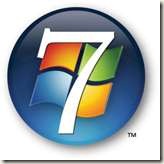SoCalDevGal works with a NetBook – moving from XP to Windows 7 via a USB key
Today I picked up a HP Mini 110 – 1025Dx which had XP installed on it. I was looking for a cheap, light laptop. I got it for $ 329 at BestBuy.
I wanted to go through the process of moving from XP to Windows 7 via a USB boot and to document it here as a service to those of you will be doing the same soon. Here’s what I found and the process that I used to move to Windows 7.
**This guide is based on using / having another computer which is set up with Windows 7 already**
1) Obtain Hardware. Minimum spec for Windows 7 is as follows: 1 Gz CPU (32 or 64 bit), 1 GB RAM, 16 GB HD disk and DirectX 9 graphics device with WDDM 1.0 or higher driver. My laptop meets or exceeds all of these minimums. There is no DVD drive on this laptop.
2) Select your edition of Windows 7. I selected Windows 7 Home Basic (since I have access to all editions as a Microsoft employee). There is also Windows 7 Home Premium which would be more commonly used in this scenario (it simply contains a few more features than Home Basic). For a comparison of all Windows 7 editions see this link. *There is also an edition called Windows 7 Starter, see this link for more info, also this link .
3) Obtain source media and a product key. I used my TechNet subscription to obtain both for this test setup.
If you are downloading the source files, then using a computer with Windows 7 already on it is a quick and easy way to burn the downloaded file to an .iso onto a blank DVD (assuming that you have another computer with a DVD drive), as this capability is conveniently built in to Windows 7. If not, then there are many .iso-creating utilities available for download. One example is winRar.
4) Obtain a 4 GB (or greater) blank USB drive. I used a SanDisk Cruzer Micro 4 GB USB drive for this purpose. You will have to format this drive to use it as bootable media, so it needs to be blank.
Prior to copying the .iso Windows 7 source files onto the USB drive, you must prepare the USB drive so that your laptop can boot from it. I used the process described on the MaximumPC website and it worked perfectly. You must follow the steps exactly as written and be quite careful to select the correct drive (i.e. the USB drive) when you are preparing the drive, i.e. formatting, copying the boot files, etc…Prepare the USB drive first, as described in the link above, and then copy the Windows 7 files from your .iso DVD to the USB drive. I did not create a top level folder on the USB drive for the source files, I just copied all of the files to drive exactly as they were on the .iso.
5) Test the hardware on your netbook. I know this step isn’t exactly needed, but since you’ll probably have an OS (XP) preinstalled, it’s just easy to make sure all of the hardware is working properly before you start the clean install of Windows 7. So I started the netbook, completed the mini-setup process for XP (i.e. enter a computer name, etc…) and continued until logon. You can, of course, skip this step, if you prefer.
6) Boot your netbook from the USB. In my case, this was easy, just plug in the USB, hit the ‘set boot item key’ (F9 in this case), and set the computer to boot to the USB key. From my research, you may have to use a third-party utility to add the ability to boot to USB in the BIOS if it isn’t included already.
7) Choose ‘clean install’ of Windows 7 and enjoy.
The whole process took about 2 hours. It is a pleasure to install a new OS on a new, lightweight machine and have it execute perfectly. After Windows 7 RTMs to the general public (October 22), I’ll be quite interested to hear from you about your experience with this same process. Let me know how it goes!
Comments
Anonymous
September 28, 2009
I like your project so much I think I will implement it for my boss and co-workers. Thanks for sharing.Anonymous
October 08, 2009
I though Win7 Starter was the preferred OS for netbooks.
